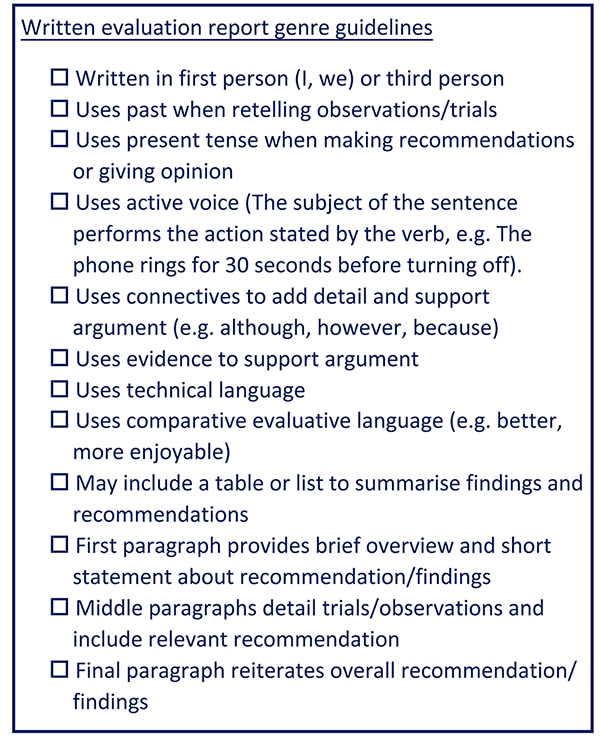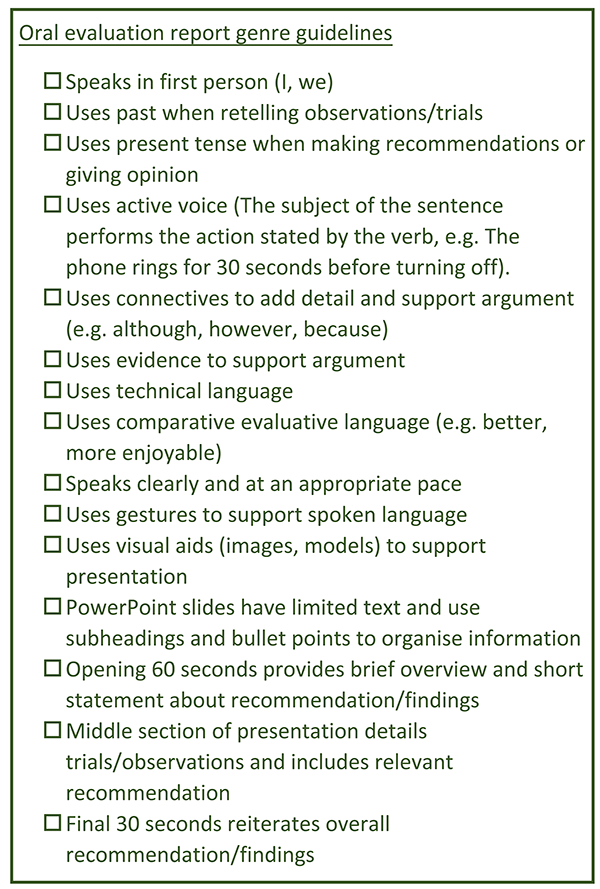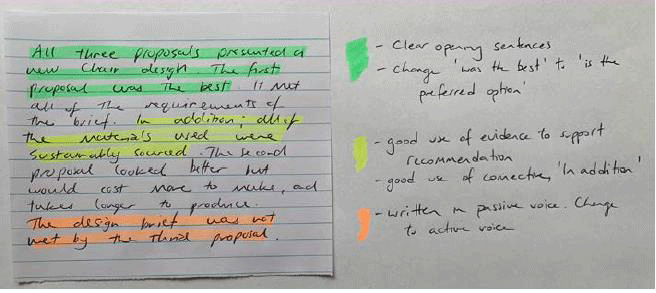Genres—or text types—that achieve the same social purpose tend to have similar structural patterns or generic structures (Butt, Fahey, Feez & Spinks, 2012, p. 251). When students understand the structures of different genres, as well as the purpose of generic structures, they are better able to produce texts. For example, if students know that instructions in procedural texts are given in sequential order and use imperative verbs, they will be able to produce more accurate procedural texts.
A genre guideline outlines the features of a particular genre, as well as the purpose of individual sections. The guideline also takes into consideration the mode of communication—whether it is spoken, written, visual or multimodal. Students can use genre guidelines, either independently or collaboratively, to assess their own or others’ texts, identifying areas of strength and improvement.
A good strategy is for students to build guidelines together. One way to do this is to present students with model texts and have them analyse and list the features of the genre (access
Using model texts to teach genre features of procedural instructions).
Students can then use genre guidelines to edit and revise the texts they produce. As they read or listen to texts they have produced, they can review the genre guidelines to ensure that their text contains appropriate generic features.
To support students to create and use genre guidelines:
- Teacher presents model texts for students to analyse and deconstruct (access
Using model texts to teach genre features of procedural instructions).
- Students create genre guidelines based on identified features in model texts.
- Students use guidelines to review one another’s texts.
- Students may choose to use different colours to highlight generic features as they edit
- Based on student feedback, students revise their texts.
The first example below is a genre guideline for an evaluation report that a teacher co-constructed with her Year 9 class. The second example is a similar guideline, but for an oral presentation of an evaluation. While the generic structures are the same, elements associated with the mode of communication differ. Below these is a copy of a summative paragraph from a draft evaluation that a Year 9 student has peer-reviewed using the genre guideline for written evaluations (VCDSTC059,
VCDSCD063).



Similarly, students can use guidelines to review and edit annotated concept sketches and drawings. For example, visual images that represent environments should contain:
- technical terms with definitions
- a scale
- symbols or legend
- pictorial and aerial views.
Teachers and students might also review the video on FUSE that demonstrates
how to give specific feedback to students on their design brief.